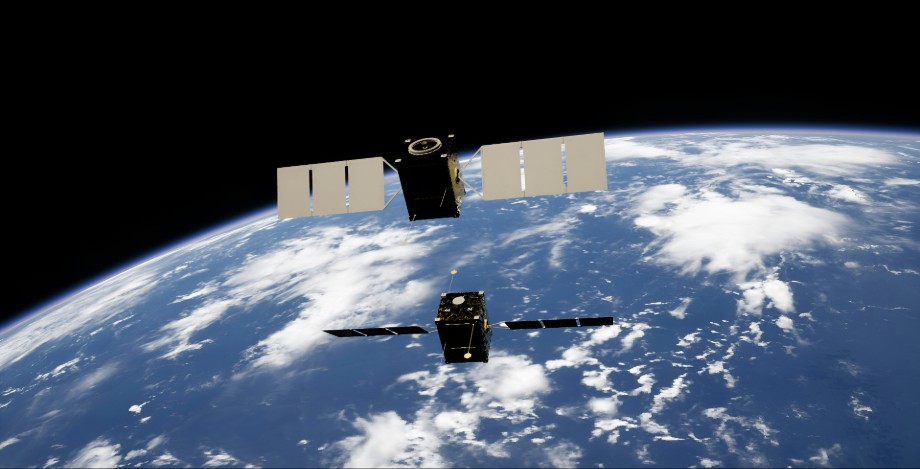Unleashing Global Connectivity and Innovation
Satellite IoT has undergone rapid growth in recent years, emerging as a transformative force in global connectivity. As industries embrace the potential of IoT on a massive scale, satellite networks are increasingly stepping in to bridge gaps where terrestrial infrastructure falls short. The year 2025 promises to be a pivotal moment in this evolution, with major technological advancements, surging adoption rates, plenty of exciting new satellite launches and growing momentum in the industry.
This article explores the state of Satellite IoT across 2025 and forecasts its profound impact on a range of sectors, from agriculture to logistics to energy.

State of the Industry in 2024
The past year has solidified Satellite IoT as a critical enabler of connectivity in remote and underserved regions. With the deployment of extensive low Earth orbit (LEO) constellations, market adoption has soared, with industries like agriculture, energy, and maritime logistics integrating IoT devices into their operations at unprecedented scales. Key players, including Iridium, and emerging Low Earth Orbit (LEO) companies like Astrocast and EchoStar Mobile, have led the charge in bringing affordable, reliable satellite-based IoT solutions to market.
Technological advancements have also played a crucial role in driving this growth. The integration of non-terrestrial networks (NTN) into the 5G ecosystem has begun to break down barriers between satellite and terrestrial connectivity, offering seamless coverage for IoT devices. Meanwhile, improvements in ground infrastructure and edge computing have enabled real-time data processing, making satellite IoT an increasingly attractive solution for industries with time-sensitive applications.
Trends and Innovations Shaping 2025
As we look ahead, several key trends are shaping the trajectory of Satellite IoT in 2025. One of the most transformative developments is the rise of direct-to-device (D2D) connectivity. By enabling IoT devices to connect directly to satellites without the need for intermediary ground infrastructure, D2D technology is reducing costs and complexity. This shift is expected to catalyze widespread adoption, particularly in regions where building terrestrial networks is impractical. Businesses that need to deploy IoT do not want always want to have to manage a terrestrial network with their incumbent gateway, backhaul, power and maintenance issues. D2D makes it easy to just deploy devices and see the data in an end application.
Artificial intelligence and advanced data analytics are also driving innovation in the satellite IoT sector. These technologies are enhancing the efficiency of satellite networks while enabling real-time insights for IoT applications. From predictive maintenance of critical infrastructure to autonomous operations in remote environments, the integration of AI is unlocking new possibilities across a range of industries.
Another key trend is the miniaturization of satellite technology, which has significantly lowered the cost of deploying and maintaining satellite IoT networks. The advent of nanosatellites and advancements in microelectronics are democratizing access to satellite connectivity, making it feasible for startups and smaller organizations to enter the market. At the same time, sustainability is becoming a growing focus for the industry, with initiatives aimed at reducing space debris and adopting eco-friendly manufacturing processes.
Predictions for 2025
The Satellite IoT market is poised for significant growth in 2025, with the number of connected devices expected to rise dramatically. SatelliteIoT.space projects a substantial increase in market size, driven by the proliferation of IoT-enabled devices and the expansion of satellite coverage into new regions. Emerging economies in Africa and Southeast Asia are likely to see a surge in adoption as satellite IoT becomes more affordable and accessible.
Within specific sectors, the impact of Satellite IoT will be particularly pronounced. In agriculture, satellite IoT will enable precision farming on a global scale, providing farmers with real-time data on weather, soil conditions, and crop health—even in the most remote areas. The maritime industry will benefit from enhanced vessel tracking and safety systems, while supply chain and logistics companies will achieve unprecedented levels of transparency and efficiency through global tracking.
However, several challenges remain on the horizon. Spectrum allocation and regulatory issues will need to be addressed to support the growing demand for satellite IoT services. Cybersecurity concerns will also become more pressing as the number of connected devices continues to rise. Additionally, the industry must contend with the growing issue of space debris and orbital congestion, which could pose risks to the sustainability of satellite operations.
Game-Changing Players and Partnerships
The growth of Satellite IoT in 2025 will be driven not only by technological advancements but also by strategic collaborations among key players. Established companies like Inmarsat and Iridium are partnering with startups and regional providers to expand their reach, while governments and international organizations are playing a crucial role in promoting adoption and standardization. These partnerships are fostering innovation and ensuring that the benefits of Satellite IoT are distributed equitably across the globe. As satellite IoT is normalised and the sector matures, just like mobile telephony, product and data costs will decrease and the democratisation of satellite IoT will benefit every corner of the earth.
Conclusion
Satellite IoT is on the cusp of a transformative era in 2025, with the potential to revolutionize connectivity and unlock new opportunities across industries. By overcoming current challenges and embracing innovative technologies, the industry is poised to deliver significant benefits to businesses and communities worldwide. As we navigate this exciting frontier, SatelliteIoT.space invites readers to join the conversation and explore the possibilities of a connected future.